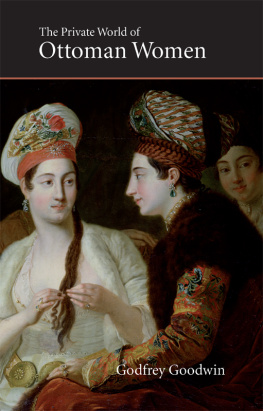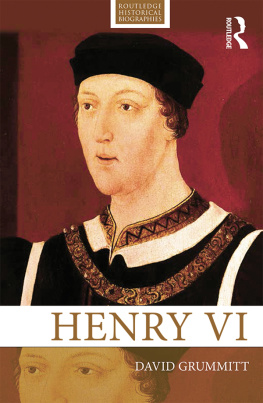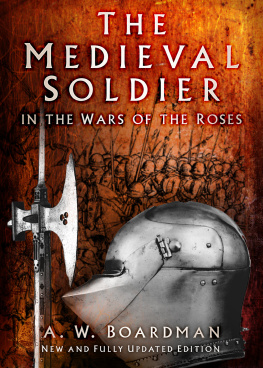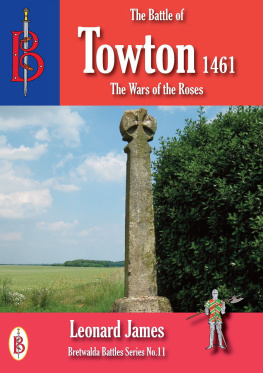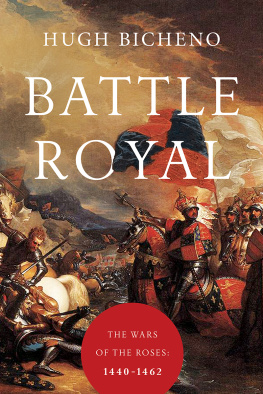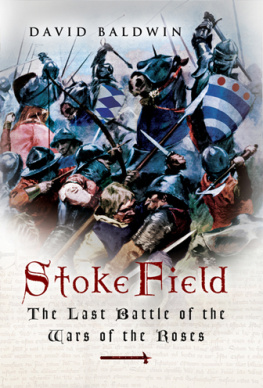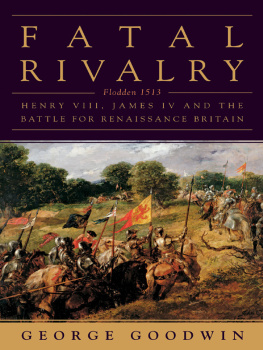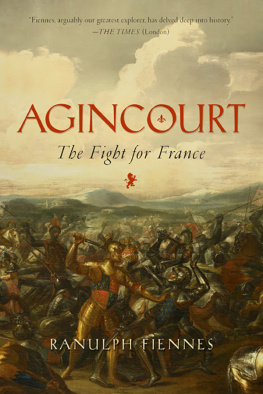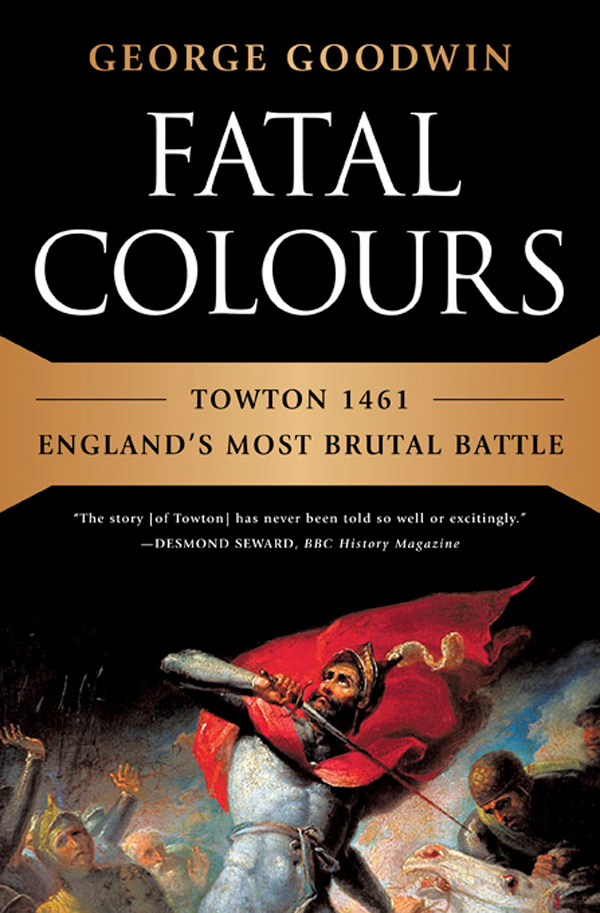
FATAL
COLOURS

Towton 1461
Englands Most Brutal Battle

GEORGE GOODWIN

W. W. NORTON & COMPANY
NEW YORK LONDON
For Fran ces, Cecily and Arthur
CONTENTS
Dramatis Personae:
LIST OF ILLUSTRATIONS
(Bibliothque Nationale de France)
(National Portrait Gallery)
(British Library)
(Topfoto)
(British Library)
(R. J. L. Smith of Much Wenlock)
(British Library)
(Bibliothque de la Ville)
(Kuntshistorisches Museum, Vienna)
(Bibliothque Nationale de France)
(Bibliothque Nationale de France)
(M.G.H. Mowbray)
(Bibliothque Nationale de France)
(Bibliothque Nationale de France)
(Master and Fellows of Trinity College, Cambridge)
(British Library)
(Brera, Milan)
(Palazzo Medici-Riccardi, Florence)
(Nick Robinson)
(National Portrait Gallery)
(National Portrait Gallery)
(Royal Armouries Museum)
(Royal Armouries Museum)
(Royal Armouries Museum)
(Roger Keech rkproductions)
(John Anderson rkproductions)
(Roger Keech rkproductions)
( Tim Sutherland )
(British Library)
INTRODUCTION
David Starkey
This is a book about a battle. But it is also a book about kingshipor rather, as the King in question was Henry VI, its very present absence.
To be short the prince is the life, the head and the authority of all things that be done in the realm of England. And to no prince is done more honour and reverence than to the King and Queen of England; no man speaketh to the prince nor serveth at table but in adoration and kneeling; all persons of the realm be bareheaded before him; insomuch as in the chamber of presence where the cloth of estate is set, no man dare walk, yea though the prince be not there, no man dare tarry there but bareheaded.
Sir Thomas Smith wrote these words of his own sovereign, that most kingly of queens, Elizabeth I. But they apply equally to all her predecessors, including that least kingly of kings, Henry VI. His court, contrary to what most historians have supposed, was magnificent. The rituals of his chapel royal were held up for emulation in Portugal. His badge was worn with pride in Italy. And at home, for almost forty years, he was treated with all the solemn, quasi-religious respect and ceremony that Smith describes.
Now contemporaries were not fools and most of them were as well able to gauge Henry VIs inadequacies as we are. But they were able to discount them because of a difference between their thought patterns and ours. Nowadays we distinguish between the office (abstract) and the incumbent (person). They thought instead of two different royal persons or kings: there was the actual King (the rex nunc or King for the time being, as the records of the Exchequer, the principal department of finance, put it with wonderful coolness) and there was the permanent King. The latter never died, as the heralds cry at a royal death made clear: the King is dead; long live the King! And he embodied the essence of kingship. But he was absorbed in whoever was rex nunc .
Moreover, this other King was not only eternal, he was also ubiquitous. The actual King, like other human beings, could only be in one place at a time. He was at Westminster. Or Woodstock. Or Windsor. Or evenGod forbidin prison. But his alter ego had no such limitations. He could, at one and the same time, be in every law court and every county. His person travelled with his seal and his most potent symbolas Smith makes clearwas an empty throne.
In short, this King was a royal god. And, like God himself, he was self-created. For these emanations of royal power were the creation of a long line of earlier kings. They went back to the Conquest and beyond. And the best of what they built survived. The French have a word for it: acquis . That is, a power which is accumulated and added to and hardly ever diminished. Such was the nature of English government.
Oldest, most important and the foundation of everything else was the unity of England. This was the achievement of the Anglo-Saxon kings of Wessex: Aethelstan, the great Alfreds grandson, who was the first king to rule over all England, and Edgar, whose imperial consecration at Bath some fifty years later in 973 set a precedent of magnificence and liturgical coherence whose effects were still felt six centuries later in the two coronations of Henry VI.
This hard-won unity was built on natural advantages. England was comparatively small; as the larger part of an island it had clear natural frontiers and its stock was relatively homogenous. But royal initiative was more important still. The key was the characteristic unit of local government: the shire (in Anglo-Saxon) or county (in French). These were established first in Wessex and then spread, with the power of Wessex, over the whole country. The shire had a double face: it was both an area of royal administration, headed by a powerful royal official, the ealdorman , and a unit of local self-government. But what it was not was just as important. The ealdorman , who became known as the earl under the Danish occupation of Canute, might be the predominant landowner in the shire. But he did not own it outright. This meant that the shires did not become semi-independent territorial principalities, as in France or, still more, in Germany.
There were still important regional differences of course: between North and South and the Celtic west and the rest. These differences emerge very clearly in the composition of the rival armies at Towton: the Lancastrian troops came largely from the North; the Yorkist, from the South and Wales. Moreover, Yorkist propaganda went out of its way to play on the fear of the Northern men as the other. It painted them as violent predators, intent on destroying the peace and prosperity of the South. And it worked. It led, it is argued, to the extraordinary savagery of the battle, in which the defeated and defenceless Northerners were treated as an alien horde and slaughtered in droves. And it left a legacy, in the problem of the North, which is still with us today.
But, for all the differences and demonization, North and South did not go their own ways. Instead, Towton, too, was a back-handed compliment to the unity of England, in which the parts struggled, not for separation, but for control of the whole kingdom.
The unity, as well as the wealth, of Anglo-Saxon England had made it very appealing to would-be conquerors; it also made it vulnerable to conquest. This is shown most strikingly in the aftermath of William, Duke of Normandys victory at Hastings. At that point, England was not conquered. But the death of King Harold II in the battle had decapitated royal government. Thereafter, without royal leadership, Anglo-Saxon resistance collapsed and delivered England to William with scarcely a fight.
Thanks to the brevity of the struggle, England was also delivered as a going concern. William was determined to keep it that wayand to keep it different from Normandy. His Norman followers were, of course, rewarded with vast estates confiscated from the dispossessed Anglo-Saxon aristocracy. But he made sure that the estates were widely scattered to avoid the sort of regional satrapies which bedevilled Frenchand Normanpolitics.
Next page
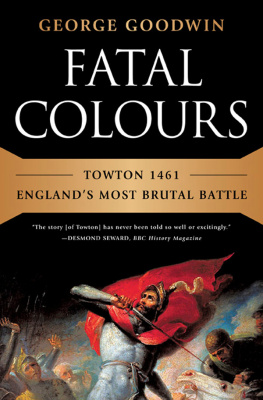
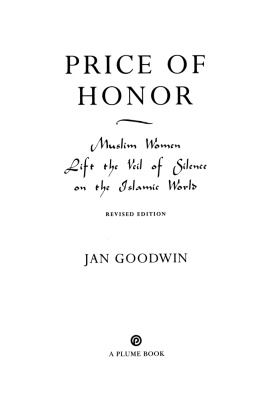
![Goodwin - Fatal colours : the battle of Towton, 1461 ; [Englands most brutal battle]](/uploads/posts/book/98484/thumbs/goodwin-fatal-colours-the-battle-of-towton.jpg)

